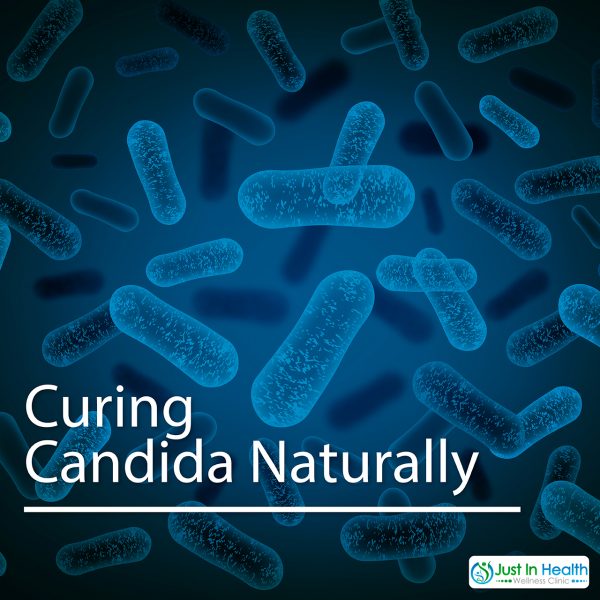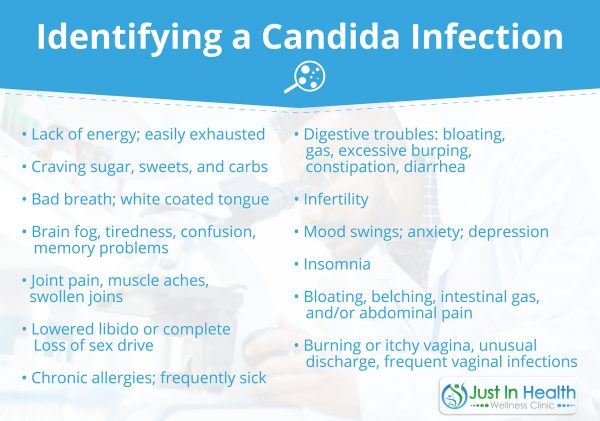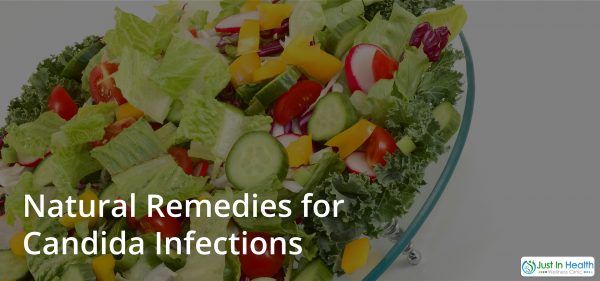Curing Candida Naturally

By Dr. Justin Marchegiani
While research shows that Candida affects approximately 70% of the population, few people know what Candida is, and even fewer know it when they’re infected. Candida overgrowth is the most common type of fungal yeast infection. Like most fungi, Candida is a fungus that can live harmlessly within your body. In fact, proper levels of Candida can even be beneficial to our digestion! However, when Candida overgrowth occurs, problems begin to arise. Today we’re going to discover the signs and symptoms of a Candida overgrowth, and learn ways to treat this infection naturally.

Causes of Candida Overgrowth
Candida overgrowth has become increasingly common due to our changing lifestyle and dietary choices. Below is a list of some of the most common causes:
- A diet high in sugar, processed carbs, and alcohol: Yeast lives off of sugar, whether it be refined sugar or the sugar from fruit and carbohydrates. Sugar and alcohol both deplete healthy gut bacteria, which creates just the environment that yeast needs to thrive.
- Taking antibiotics: Antibiotics are literally meant to kill bacteria. The problem is that they don’t discriminate, and end up killing off the good guys, too.
- Using birth control: Women taking birth control pills have been shown to be twice as likely to develop vaginal yeast infections like Candida.
- Weakened immune system: Those who suffer from or who have undergone cancer or HIV/AIDS treatment have lowered immunity and are more susceptible to infection. Infants, the elderly, and those suffering from autoimmune diseases are also more likely to develop fungal overgrowth.

Identifying a Candida Infection
Candida overgrowth is hard to detect. A person can look perfectly healthy on the outside, but be silently suffering on the inside. If you self-identify with any of the causes of a Candida infection, check out this list of common symptoms to further determine whether you suspect this overgrowth may be harming your health:
- Lack of energy; easily exhausted
- Craving sugar, sweets, and carbs
- Bad breath; white coated tongue
- Brain fog, tiredness, confusion, memory problems
- Joint pain, muscle aches, swollen joins
- Lowered libido or complete loss of sex drive
- Chronic allergies; frequently sick
- Digestive troubles: bloating, gas, excessive burping, constipation, diarrhea
- Infertility
- Mood swings; anxiety; depression
- Insomnia
- Bloating, belching, intestinal gas, and/or abdominal pain
- Burning or itchy vagina, unusual discharge, frequent vaginal infections
Because the list of symptoms is vast, it is hard to diagnose Candida overgrowth and it often goes undiagnosed or misdiagnosed. If you suspect you have a Candida infection, it is a good idea to follow the diet and wellness recommendations to fix Candida overgrowth. This is a case of “better safe than sorry,” because even if you aren’t infected, these guidelines are still beneficial to your health! If you’re someone who loves to self-quantify or is just curious, a functional medicine doctor is trained in identifying this issue, and can even help you with a stool test to know for sure if you have a Candida overgrowth problem.
Click here to work with a functional medicine doctor to balance your Candida levels!

Natural Remedies for Candida Infections
Perhaps the most effective treatment for Candida overgrowth is a dietary makeover. The recommendations outlined below will build your immune system and eliminate foods that feed the fungus.
- Garlic contains sulfur which is particularly skilled at killing fungi. Be sure to use raw garlic to reap all the benefits of its antifungal properties!
- Eat your greens! Leafy green vegetables contain a host of vitamins and minerals which boost your immune system. While yeast is acidic, green vegetables are alkaline, which makes them great at fighting off Candida.
- Limit fermented foods: “But fermented foods are good for me!” While this is true, overdoing fermented foods can actually feed Candida! While the good guys need fermented foods to thrive, the bad bacteria (such as Candida) like them too. For the duration of the Candida cleanse, limit fermented foods.
- High-quality probiotics will help restore balance to your gut bacteria.
- Coconut oil is more than a delicious and healthy fat, it is also antimicrobial! Caprylic acid, a main component of coconut oil, actually kills Candida. If you don’t use much coconut oil, taking caprylic acid as a supplement will help get the job done!
- Swap sugar for stevia. Sugar feeds yeast, while stevia actually kills it!
- Oregano and clove oil kill off parasites and fungi such as Candida.
- Limit your exposure to environmental toxins. This may mean it’s time to look at natural beauty products and cleaning products. Be cautious of perfumes, paints, and other strong chemicals.
- Vitamin C boosts your immune system, supports your adrenals, and helps your stomach acid fight Candida.
Keep in mind, you may experience bloating, headaches, and breakouts while you’re body detoxes. This is to be expected, because while your body kills off the fungus, dozens of toxins are being released! In 1-2 weeks, you will begin to feel much better as the Candida will effectively be removed from your system. For maintenance, you can resume normal consumption of fermented foods, and should maintain a diet low in sugar, alcohol, and processed carbs.
Click here for a holistic health consultation and start feeling better today!




